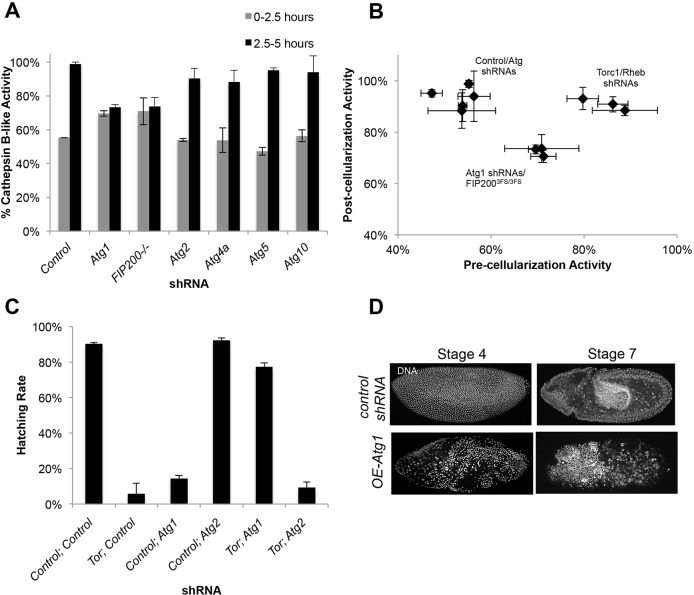Fig. 6.
Atg1, but not autophagy, is required for yolk catabolism and is regulated in a Tor-dependent feedback loop. (A) Quantification of percentage of active Cathepsin B-like proteinase in embryos pre-cellularization (0-2.5 h) and post-cellularization (2.5-5 h) shows that Atg1, but not Atg2, is necessary for timely activation of Cathepsin B-like proteinase activity. (Note: Fip2003F5/3F5 are mutant embryos, not shRNA.) (B) A 2D plot of pre- versus post-Cathepsin B-like proteinase activation in shRNA-expressing embryos segregates into three different clusters, demonstrating that control embryos, embryos deficient for Atg1 complex components (Atg1 and Fip200), and Tor pathway knockdown embryos all show different activation levels. (C) Hatching rates of double shRNA knockdowns show that depletion of Atg1 rescued the hatch rate defects of shRNA-Tor embryos, but the same rescue was not demonstrated with expression of shRNA-Atg2. Data are represented as the s.d. of either biological triplicates (Cathepsin B-like proteinase activity) or biological duplicates (hatching rates). (D) Overexpression of Atg1 reveals a similar phenotype to control shRNA embryos.

